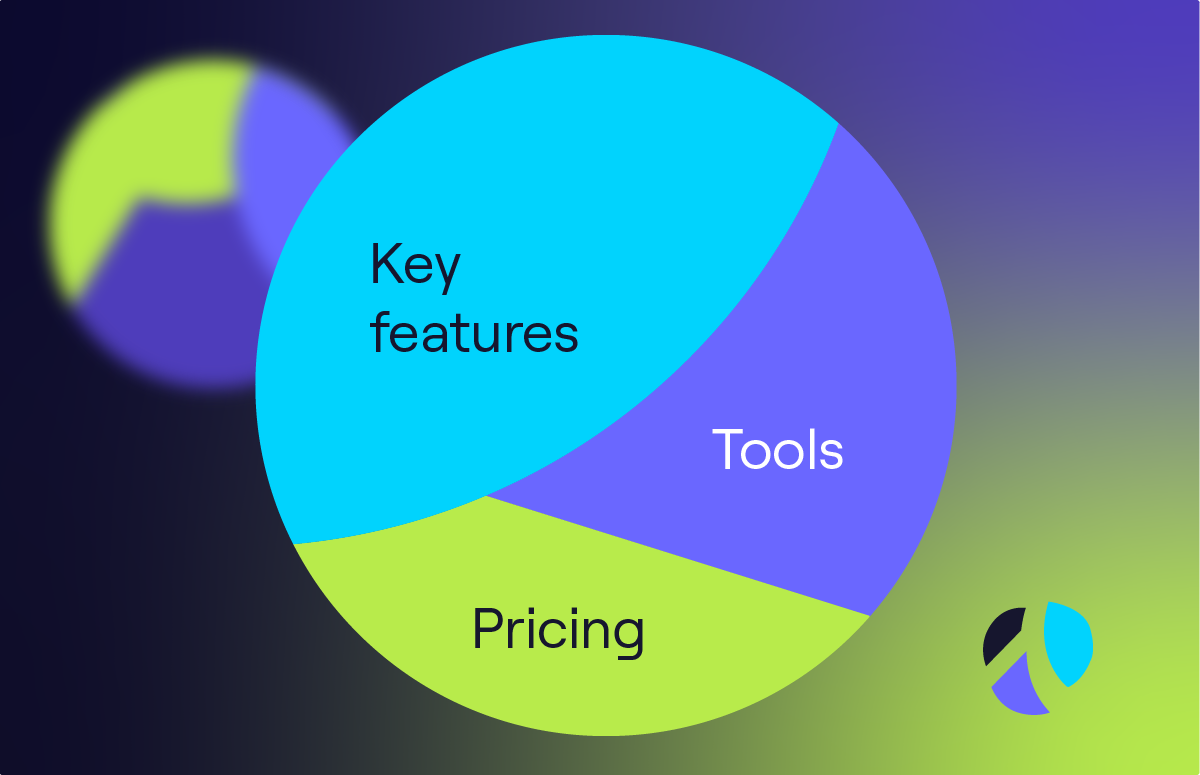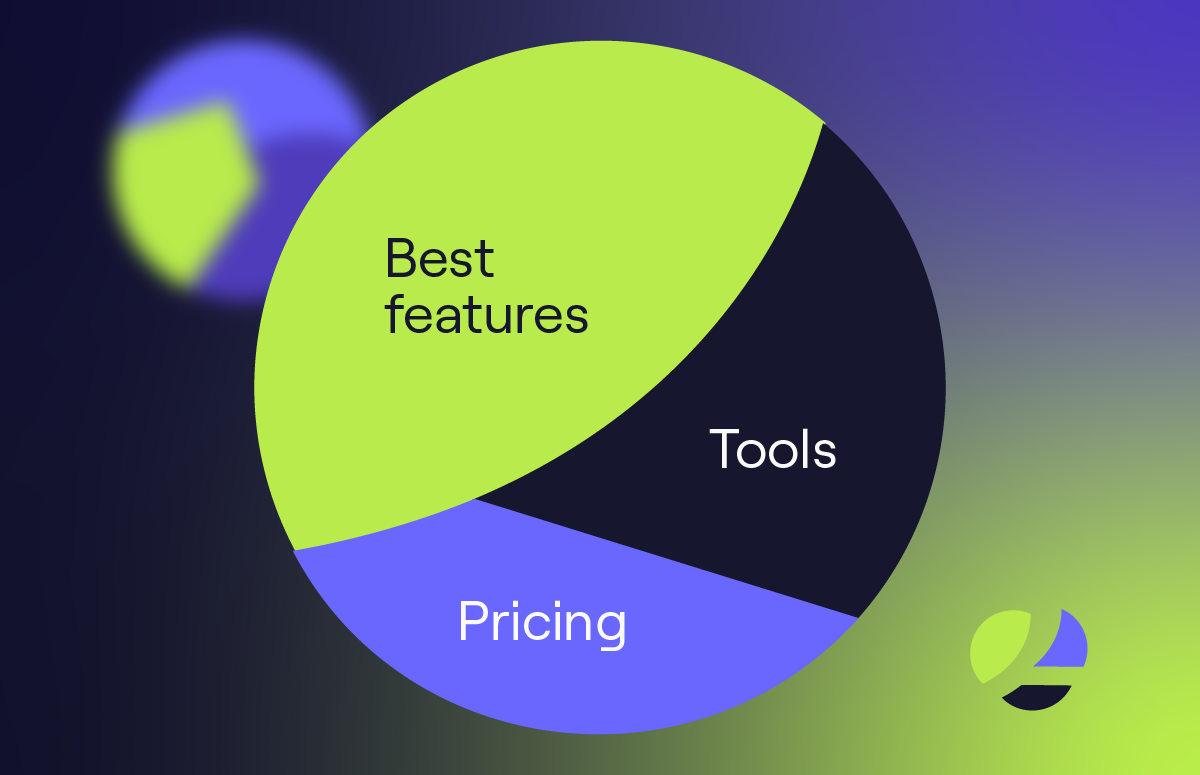How Social Selling on LinkedIn Can Fuel Your Pipeline + Tips for 2025
Social selling on LinkedIn is a powerful tool for bringing in new leads and growing your business.
The platform’s immense reach and targeting capabilities make it an invaluable resource for sales professionals who want to build relationships, nurture prospects, and drive revenue.
Scroll 👇to explore:
- What is meant by social selling?
- Why B2B salespeople should build personal brands on LinkedIn.
- How to effectively sell across social media.
What is social selling?
Social selling is a prospecting technique that involves interacting with leads on a social network through various methods — posting content, sending direct messages, etc.
The goal of all this activity is not to bolster your self-esteem (though a confidence boost is always helpful in sales).
Instead, it’s to build strong relationships with ideal leads and develop your reputation as an expert in your industry.
When you execute social selling correctly, potential buyers will think of your name when they need help.
And as a result, your inbox will fill up with messages from leads who want to learn more about your solution.
In B2B sales, the majority of social selling happens on LinkedIn. Unlike Facebook or Instagram, LinkedIn is an online network for professionals actively searching for and open to expert advice and creative solutions to their business problems.
The benefits of social selling for reps
Social selling on LinkedIn can dramatically strengthen your sales pipeline and help you exceed your numbers. Here are three reasons why:
1. Social selling expands your reach
Unlike cold calling or event networking, selling on social media is an incredibly wide-reaching lead generation tactic.
A well-written LinkedIn post, for example, can reach hundreds, if not thousands, of potential leads. It can awaken your target audience to a problem they have and the method to use to solve it.
Of course, not all your posts will reap such rewards, especially when you’re just starting. But after months of consistent effort, you should start seeing a satisfying engagement level.
2. You develop a personal brand
If you regularly post insightful and helpful content on LinkedIn, you’ll inevitably gain a reputation as an expert in your space.
This is helpful in the short term for generating leads and hitting your sales goals.
But a personal brand has long-term benefits too. The reputation sticks with you — even if you leave your job — and so do your connections and followers.
How you leverage this to your personal advantage depends on your goals. You could, for example, become an influencer and make money off your posts.
Or you could simply continue tapping into that network for B2B leads as you move to a different company or start your own business. Regardless of your goals, having a dedicated following opens up doors.
3. You book meetings with high-quality leads
If a user has been following you on LinkedIn for a while, they’ve seen much of your content. They’ve likely developed a firm understanding of the problems your business solves.
When this lead finally reaches out to you for help, they’re likely a good fit for your product or service. They’ve already pre-qualified themselves over time by viewing your content.
And more meeting with qualified leads results in shorter sales cycles, higher win rates, and less wasted time on leads who neither understand nor need your solution.
5 steps for successful B2B social selling
Below is the five-step process you must follow if you’re looking for ways to succeed in social selling on LinkedIn.
1. Optimise your LinkedIn profile
Your LinkedIn profile is where B2B leads go to learn more about you. Treat it like a sales landing page and optimise it. Optimised, in this scenario, means customer-centric.
To make it customer-centric, clearly explain the following in your profile:
- Who you help.
- How you help them.
- Why you’re qualified to do so.
Keep in mind that writing a great profile is a rhetorical art. You’re trying to get visitors to see you’re the go-to person for fixing their issues.
According to social selling expert Daniel Disney, you won’t be able to do that by talking about yourself.
“You’ve got to make it more about them and less about you. Talk about who you help, how you help them, what you can help the new customer achieve, and include someone you’ve helped that they’ll recognise.”
Note that while explaining your business’s who, how, and why, there are some secondary things your profile needs to communicate.
For starters, it should make you come across as relatable, knowledgeable, and friendly. And it should make it easy for visitors to learn more about your B2B business and get in touch.
Let’s go over how to fill out the sections of your profile to accomplish these goals:
Profile picture
A good profile pic is a hi-res image where your face takes up 60% of the frame. You should be the only person in the picture wearing what you’d typically wear to work.
Cover photo
Avoid distracting backgrounds and ensure your cover photo is 1584 x 396 pixels. Workspaces or a picture representing your company are great go-to’s for your cover photo. For a clean look, consider using a background eraser.
Headline
Your headline should tell visitors who you help and how. Many salespeople follow the “I help X do Y” formula.
Be sure to include keywords that your target audience is searching for. This will make your profile more discoverable to leads.
Summary
The summary is a great place to explain your value to your visitors.
To get the most out of this section, include three to five sentences that describe:
- Your years of experience in your industry.
- Your areas of expertise.
- Your skills.
- What you’re most known for professionally - what have been your biggest career wins?
End your summary with a call to action. For most salespeople, this message will ask leads to book a call with them to learn about their solution.
Here’s VP of Global Sales Development at Cognism, David Bentham’s about section:
It is short and humorous and a great example of how to sell on LinkedIn.
Another longer example, as we discussed above, is growth advisor Gaetano DiNardi:
In conclusion, these are the four most critical components of your profile. Use them wisely to build credibility and show your potential customers how you can help them.
2. Start consuming great content in your niche
It’s smart to regularly consume great content in your niche for two main reasons:
- You’ll learn from the masters how to create great LinkedIn content yourself.
- You’ll gain industry knowledge that serves as material for creative and insightful posts.
To get benefit one, find social sellers on LinkedIn with a large following and study them closely. Analyse their high-performing posts and identify the qualities that make them so effective.
You’ll also find inspiration for your posts and discover your voice through seeing these social selling examples.
“You’ll want to surround yourself with the right people, take it nice and steady, and consume more regularly.” — Daniel Disney
To get the second benefit (gaining industry knowledge), you must consume LinkedIn content and books, articles, courses, and industry publications related to your niche.
Stay updated on the current landscape of your industry. Know the trends and issues that matter to your customers.
Make a daily habit of this learning. Twenty minutes every morning is a good place to start. The knowledge you gain will help you develop unique and interesting things to say to your audience.
And as an added benefit, you’ll also be more confident and persuasive on sales calls.
3. Develop a content strategy
The content you post should relate to the needs and interests of your ideal customers.
Your posts should help them solve problems, gain insights, and think differently about an issue or a trend. They shouldn’t sell. Salesy posts don’t get as much engagement.
Here’s a two-pronged strategy for sales representatives to follow on LinkedIn
- Publish one post per day: focus your post on one idea. It could be a book review, a summary of best practices customers are using, or a hot take on an industry news story.
- Comment on two to three other posts per day: write meaningful comments on the posts of other influencers in your space. This way, you’ll get your name in front of new sales leads.
If you want to come off as an expert, consider writing articles about your niche and publishing them on LinkedIn. You can also record webinar sessions in high quality on Zoom and repurpose the content for your social posting.
Your ideal customers will appreciate valuable content from your point of view.
4. Connect with leads daily to expand your network
Connecting with leads who fit your ideal customer profile should be a part of your daily social selling routine. It’ll grow your network.
This is important because…
“When it comes to LinkedIn, your network is your net worth.” - William Gay, former Senior AE at Cognism.
You can identify the right people to connect with in various ways:
- Look at the people who interact with your social posts.
- Use LinkedIn’s people search and filtering functions.
- Connect with people from your target accounts or prospecting lists.
The main rule here is not to connect with over 30 people a day because LinkedIn will ban you, temporarily or permanently, depending on how often you do it.
As for how to get people to accept your requests to connect, send a relevant message along with your request. Do some research to make it personalised to each prospect.
Perhaps find a post they shared and discuss it. And be sure to make the message short and sweet. Throw in an emoji to come across as friendly. 🙂
According to William, you should also strike a conversational tone:
“Don’t make your salutations too formal or personal. Just use their first name because I can tell you now, the only time I’ve been called Mr is in phishing emails, and you don’t want your prospect to think you’re trying to scam them!”
After the initial connection, build the relationship by commenting on their posts and sending them valuable insights via InMail messages. These include blog posts, news articles, webinar invites, and other helpful content.
How to ask for a sales meeting on LinkedIn
After building relationships by interacting with prospects at least three to four times on the platform, send a message discussing a pain point they’ve been struggling with.
Ask if it’s been bothering them as well. If they say it has, ask if they’d like to book a meeting to learn how you can help.
If not, stop the sales talk, but keep nurturing the relationship. They might have the issue later and come to you. Remember, social selling for B2B is a long game.
Consider using a sales intelligence tool to help with your outreach. For example, Cognism is a great way to find emails on LinkedIn and build targeted prospecting lists.
5. Track and improve your performance
LinkedIn’s social selling index (SSI) allows you to track your performance as a social seller. It helps you identify your weaknesses and strengths to adjust your strategy accordingly.
LinkedIn calculates your SSI based on four criteria:
- The quality and reach of your personal brand.
- The quality of the people you’re reaching.
- The amount of engagement your posts receive.
- How successfully you build relationships.
You can find your score through this link: social selling index.
The dashboard provides helpful data to help you finetune your social selling strategy.
For example, the owner of the dashboard above should tweak their posting strategy because their engagement score is low.
Neil Patel has a great article on how to use LinkedIn’s SSI like a pro, if you want to learn more.
Best practices for social selling on LinkedIn
Stick to best practices like having a daily social selling routine and starting slow; these will help you succeed in your LinkedIn selling adventure.
Form a daily social selling routine
Consistency is key when it comes to social selling with LinkedIn. Consider setting aside 45 minutes per day to work on your tasks.
Here’s an example daily routine:
- Connect with five leads.
- Publish one post.
- Comment on two posts.
- Send five InMail messages to leads.
The more frequently you engage with your network, the faster you’ll gain traction on the platform and start booking meetings.
Use copywriting techniques
When writing your LinkedIn posts, use copywriting techniques to grab and hold users’ attention on the app.
Use humour, storytelling, startling facts and stats, and interesting questions to hook and engage your audience.
As a rule, write how you talk. Focus on educating your audience about something they care about, not selling them something.
Emulate your favourite social sellers
Find your social selling LinkedIn heroes and create posts that would make them proud. Uncover the techniques that drive the effects you also want to create in your posts. Then apply those tactics to your creations.
That’s exactly what Jack London did with Rudyard Kipling when he was learning to write fiction:
“As to myself, there is no end of Kipling in my work. I have even quoted him. I would never possibly have written anywhere near the way I did had Kipling never been.” — Jack London
Start slow and stay true to yourself
There’s no need to rush or be someone you’re not. Follow Daniel’s advice to go slowly and post about topics that interest you (and your prospects).
“It’s all about getting comfortable in your voice, writing your thoughts and opinions, and sharing those with your audience. Don’t look at the mountain and get intimidated - start nice and slow and take each step as it comes.” — Daniel Disney
Here’s an example of a helpful LinkedIn post from Kyle Coleman. He’s the SVP at Clari, a software company that helps salespeople and revenue officers. His posts typically teach people selling tactics:
The success of this post shows that riffing on another person’s writing or image is a solid way to make content, as long as you’re giving credit to the original creator.
Here’s another great LinkedIn post — this one from William Gay:
Cognism had a competition to see who could get the most engagement from a post on LinkedIn. Of course, this post won.
Why? Because it told a story that was relevant and hooked people with humour. Plus, it showed personality without being overbearing.
Build a strong LinkedIn profile
Daniel Disney uses his headline and cover photo to present himself as an expert, the king of social selling on LinkedIn. Check it out:
The sales managers and reps he’s selling to can take one look at his speaking experience, authorship, and training experience and know that he knows what he’s doing.
He also lists his services in his headline so people can find him on LinkedIn search when looking for social selling trainers.
With all this said, developing a social selling strategy is highly beneficial because it:
- Builds relationships.
- Brings your research to you.
- Gives you insight into buying signals.
- Allows sales reps to engage at the right time.
And, if you want even more advice… be sure to listen to this episode of Revenue Champions:
Have more conversations with Cognism
Cognism’s Sales Companion gives you access to the emails and phone numbers of prospects you’d like to do business with on LinkedIn.
Book a demo with an expert data consultant today 👇



